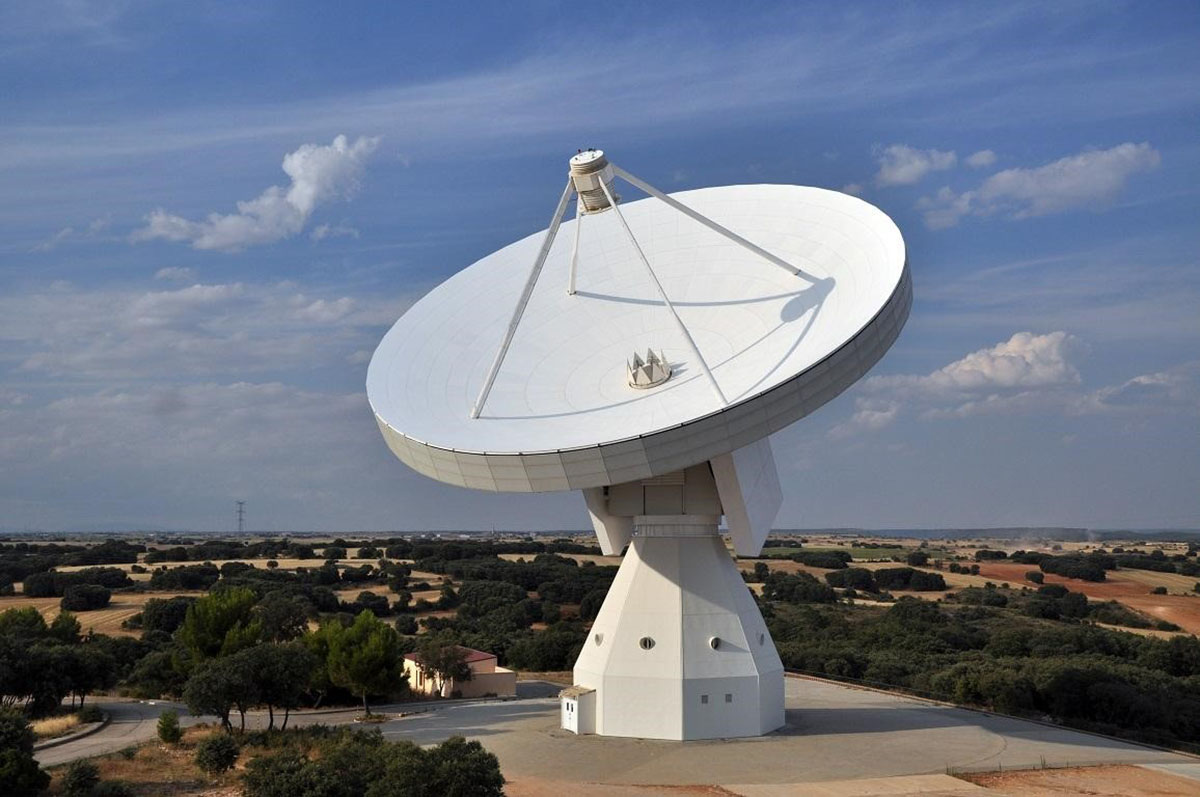The Ministry of Transport and Sustainable Mobility leads the work to detect interstellar molecules using the Yebes Observatory radio telescope
News - 2024.11.13
 The radio telescope of the National Geographic Institute at the Yebes Observatory (Guadalajara)
The radio telescope of the National Geographic Institute at the Yebes Observatory (Guadalajara)
The Ministry of Transport and Sustainable Mobility is leading, through the National Geographic Institute, the work to detect molecules in interstellar space. The large 40-metre radio telescope that the National Geographic Institute has at the Yebes Observatory (Guadalajara) has become the world's leading tool for detecting new molecular species in the cosmos.
In the last four years, Spanish astronomers, many of them from the Astronomer Corps attached to the Ministry of Transport and Sustainable Mobility, have already discovered 90 new molecular species using this radio telescope.
The Department is thus contributing its space infrastructures, which it needs for implementing its positioning, navigation and mobility policies, to other areas of major scientific and technical interest.
Interstellar clouds
The space between the stars is not empty. Within it are large masses of gas and dust, called 'interstellar clouds'. Small dust grains (solid material) can shield the ambient radiation field very efficiently and, as a result, molecules of a certain complexity can be formed in the gas. The discipline that studies these processes, called astrochemistry, is one of the most dynamic areas of research in contemporary astronomy.
Observation using radio telescopes has proved to be the most powerful tool for identifying molecular species by analysing the radio waves that reach us from interstellar clouds. Specifically, thanks to its large size and the sensitivity of its receivers, the radio telescope that the National Geographic Institute has installed at the Yebes Observatory (Guadalajara) has become the most efficient instrument in the world for discovering interstellar molecules.
Thanks to the collaboration of astronomers from the National Astronomical Observatory and the Spanish National Research Council (CSIC), 90 new molecular species have now been detected in space since these observations began in Yebes around four years ago. This represents 28% of the total number of molecules identified in space in the history of radio astronomy.
Chemical complexity
The most recently detected species are two large aromatic molecules that illustrate the complexity and richness of chemical processes in interstellar clouds.
In any event, and after many intermediate steps, this organic wealth will be inherited by the planets that will form within such clouds. It is the same wealth that gave rise to life on Earth. Since chemical processes are exactly the same throughout known space, and since habitable planets in the Milky Way (and other galaxies) are so extremely numerous, it is to be expected that life has emerged and continues to emerge in many corners of the universe.
Non official translation




